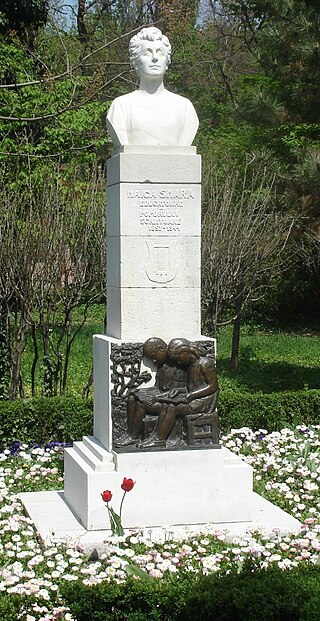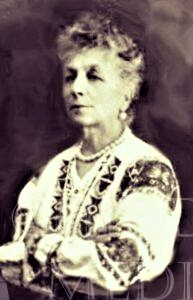The bust of Smaranda Gheorghiu was made of marble by sculptor Mihai Onofrei and was unveiled in 1945, one year after her death. On a stone pedestal is the bust of Smaranda Gheorghiu, also known as “Maica Smara” (as Veronica Micle and Mihai Eminescu called her at the time). At the bottom of the plinth is a bronze bas-relief depicting two children sitting on a bench and reading from a book.
Another work by Mihai Onofrei is the Bust of Bogdan Petriceicu Hașdeu, located in the Writers’ Rotunda in Cișmigiu Park in Bucharest.

Who was Smaranda Gheorghiu?

Smaranda Gheorghiu (1857-1944), writer, publicist, active militant in the feminist movement of her time, better known as “Maica Smara”, was a complex personality, active both in the cultural and educational fields.
Smaranda Gheorghiu was, above all, a man of the school. He practiced his teaching profession with great dedication to his students. He promoted the “outdoor school”, he supported giving due prestige to drawing, music and gymnastics. He supported the establishment of workshops in schools, where students can carry out practical work in order to learn a job, and recommended that parents take into account the child’s skills when choosing his profession.
The school proposed by Smaranda Gheorghiu was recognized by international pedagogical science; she visited almost all the capitals of Europe, assuming the role of a state missionary and traveling the world in her indispensable black, long skirt, combined with the traditional Romanian blouse and borangic thread scarf.
She was named “Educator of the people” for all her special merits in promoting Romanian culture, for her involvement in building schools, modernizing historical monuments, erecting libraries, statues or cultural homes.
For more information, click here